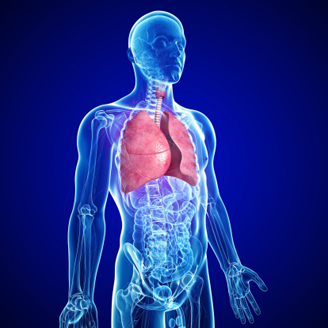Does Inspiratory Muscle Training Improve VO2 Max?
 The concept of inspiratory muscle training makes sense: because endurance sports cause breathing to become more difficult, learning to breathe more efficiently and avoid fatigue in breathing muscles should enable athletes to move faster. However, evidence as to whether or not this is true is still scarce. While several studies have attempted to find the answer, most have used only a small number of subjects and have had a weak experimental design.
The concept of inspiratory muscle training makes sense: because endurance sports cause breathing to become more difficult, learning to breathe more efficiently and avoid fatigue in breathing muscles should enable athletes to move faster. However, evidence as to whether or not this is true is still scarce. While several studies have attempted to find the answer, most have used only a small number of subjects and have had a weak experimental design.
Working off the above, many people automatically draw the conclusion that inspiratory muscle training increases the amount of oxygen in the blood, therefore increasing maximal oxygen uptake (VO2 max). This assumption, however, is certainly untrue.
What it Can and Can’t Do
As inspiratory muscle training is not directly correlated to VO2 max, it may seem obvious to dismiss the concept entirely, since the practice is not linked to an obvious oxygen mechanism, but this, again, is rushing ahead. In order to understand how inspiratory muscle training can benefit athletes, it is necessary to take a look at the bigger picture, which is just what the University of British Columbia did. A group of researchers combined a number of small studies into a larger meta-analysis and, after scrutinizing the data, came to the following conclusions:
- Inspiratory muscle training does, in fact, strengthen the breathing muscles, and it does this by allowing the athlete to inhale with a greater force.
- Evidence suggests that athletes engaging in the practice would likely be able to improve their performance; although, this may only be true for particular sports and under certain conditions. Which these are is still not completely clear.
- The practice does not increase VO2 max; rather, improvements result from another mechanism.
How it Works
The question, then, is which mechanism does inspiratory muscle training affect? According to Breathe Strong, it affects a cardiovascular reflex, called the metaboreflex, which is triggered by the buildup of metabolic by-products in the breathing muscles. When the metaboreflex is activated, blood flow to the limbs is restricted in a process known as vasoconstrictions. The reflex is activated when the breathing muscles are forced to work hard or for a long period of time. This means that, since the blood flow is unable to reach the exercising muscles, oxygen and nutrients cannot be delivered to the muscles, and the removal of metabolic by-products is impaired.
Research suggests that the intensity of breathing needed to activate the metaboreflex can be increased by practicing inspiratory muscle training, which enables athletes to work harder and longer before the metaboreflex comes into action and causes the blood flow to be directed away from the limbs.
Benefits of Inspiratory Muscle Training
Even if studies in the future conclude that inspiratory muscle training is directly useful for all sports and conditions, the training does provide certain benefits to all types of athletes. Firstly, it makes breathing feel easier because, over time, it strengthens the inspiratory muscles. This means athletes are able to work at a lower percentage of their maximum capacity. Secondly, it increases the endurance of inspiratory muscles and delays fatigue. Finally, because the training makes breathing feel easier and enables limbs to become better supplied with blood, perceived exertion is lower.

